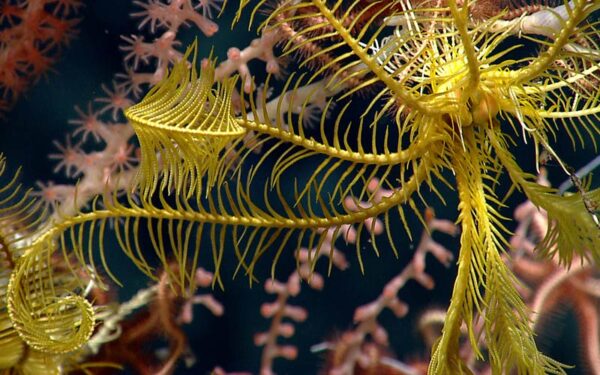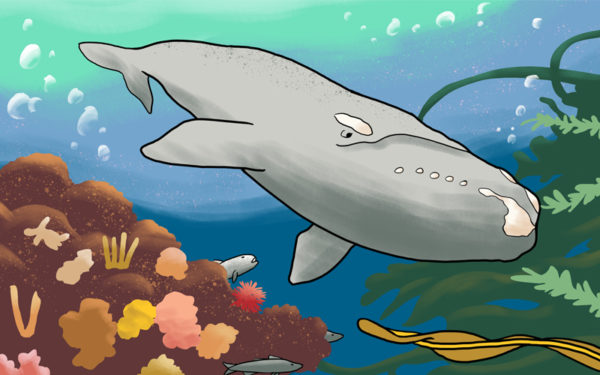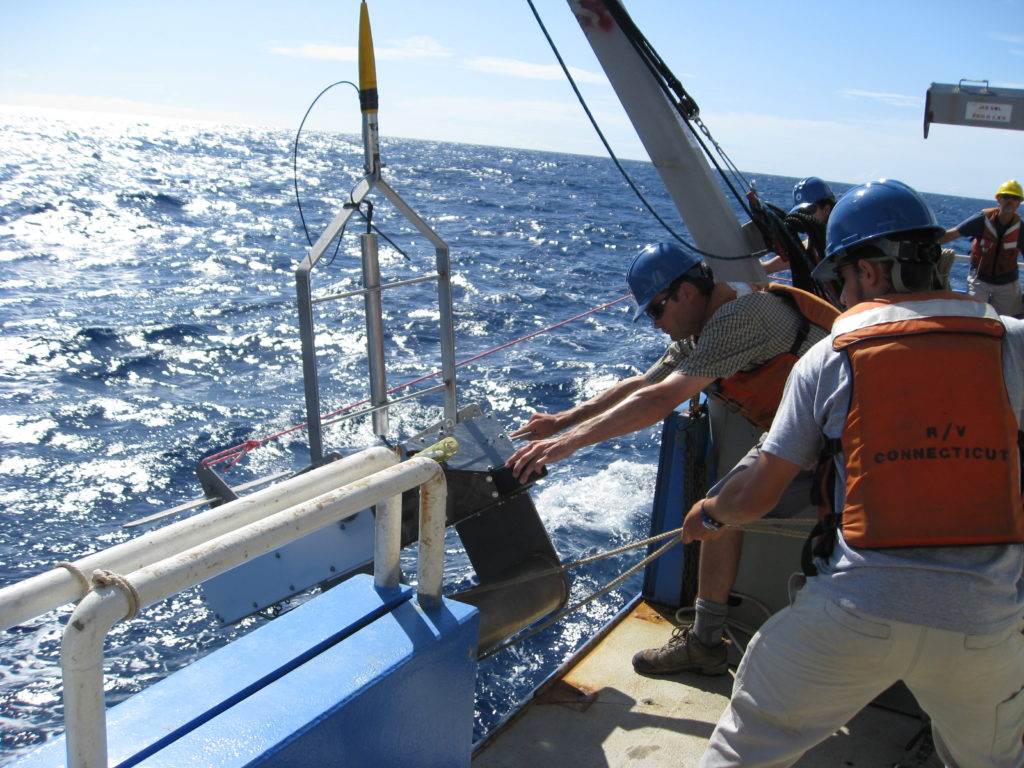
On the stern of the Research Vessel Connecticut, I'm (center) recovering a towed sonar system along with my team. We used the sonar to image krill and other prey in canyons, trying to understand what makes these deep-water regions such important habitat for fish and other predators. Photo: Courtesy of Gareth Lawson
The Northeast Canyons and Seamounts Marine National Monument holds a special place in my heart. This monument, designated by President Obama in 2016, protects crucial marine habitats for incredible species, from whales to corals, along the edge of the New England continental shelf.
The monument encompasses four seamounts and three underwater canyons just 130 miles off the coast of Cape Cod. It was designated both for its rich biodiversity and its scientific value. Many rare species have been discovered in the canyons and seamounts that are more abundant here than anywhere else on Earth. And we’re still discovering new ones.
Not many people have the privilege to visit these offshore places, but I have led research expeditions to the canyons surrounding the monument to learn how these deepwater ecosystems work.
The Canyons and Seamounts Have Incredible Biodiversity – And We’ve Only Scratched the Surface
Although we know that the New England canyons and seamounts are important hotspots in the ocean, we’re still learning all of the reasons why.
The canyons cut deep into the continental shelf and are home to a rich food web – including the prey species I study, like krill and small, weird deep-water fishes like hatchet fish and lantern fish. At the canyon heads, we’ve seen layers of krill over a hundred feet thick and extending for miles out from the canyon wall. This makes the water above the canyons an ideal feeding ground for animals like squid and forage fish, as well as top predators like whales, dolphins, and large fish like silver hake.
Canyons support so much of the marine ecosystem that they have been called “keystone structures.” Like a keystone species, the ecosystem depends on these structures and would change drastically without them.
On calm days with good visibility, the abundance and diversity of animals we’ve seen concentrated in canyons has been spectacular: schools of rays breaching out of the water, boils of petrels dancing above the sea feeding on surface prey, and all kinds of whales and dolphins.
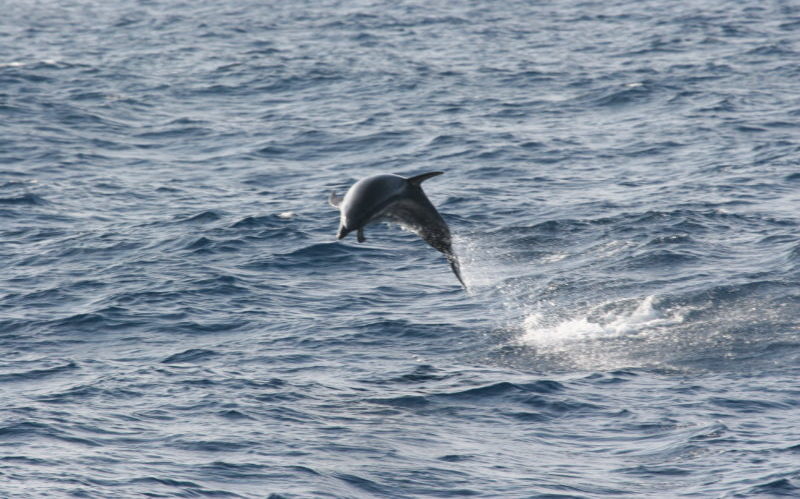
The seamounts rise thousands of feet from the ocean floor. They provide a shallower habitat for a variety of bottom-dwellers like deep-sea corals and sponges. Seamounts create “oases” in the ocean that provide migratory predators like tunas, sharks, and marine mammals plenty of food.
At Bear Seamount, the most studied of the monument’s seamounts, surveys have documented a wide diversity of animals, like fishes, squids, and crustaceans, several of which were new records for the region or species rarely seen on our side of the Atlantic – and yet our best estimate is that we’ve discovered only 47 percent of Bear Seamount’s rich biodiversity.
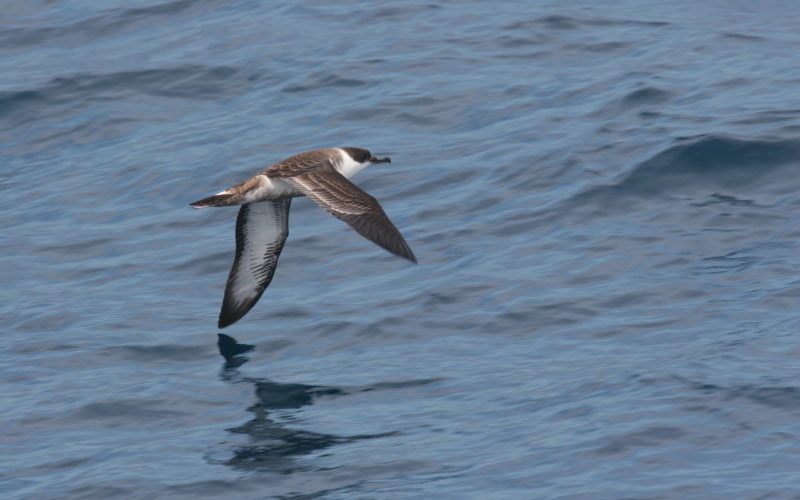
Protections for these Special Places Are Necessary
The monument’s status bars commercial fishing and drilling in the protected canyons and seamounts. It’s critical that these structures maintain their protections.
Allowing large-scale fishing in the monument would be devastating. One trawl could take out coral formations that have been living deep in the monument for centuries.
Drilling would be catastrophic as well. One oil spill could decimate the entire ecosystem before we even learn what we destroyed.
There is so much that remains to be discovered and understood in the canyons and seamounts. It is vital that we preserve these fascinating and ecologically important sites as living laboratories for exploration and research. We must protect biodiversity as an entire ecosystem, including everything we have yet to document.


